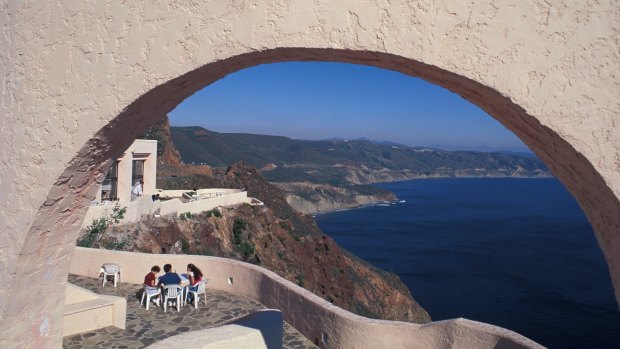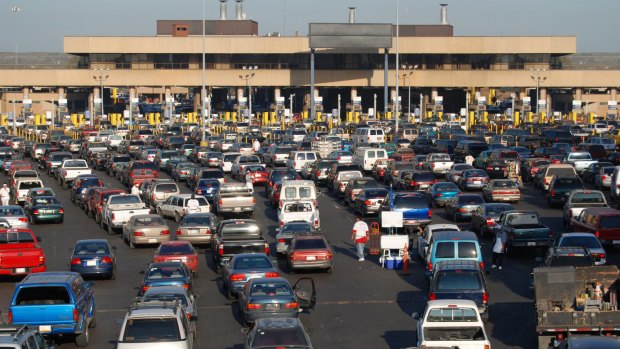This was published 7 years ago
Mexico border wall at Tijuana, Baja California: What it's like to cross the border from San Diego, USA into Tijuana, Mexico
By Kylie McLaughlin

Amazing views await along Highway 1 on Baja California's northern coastline.Credit: Alamy
It's the biggest land port of entry in the western hemisphere.
To the south, a gargantuan cluster of cars and buses in a 10-lane-plus bottleneck head north towards the US town of San Diego.
Passengers could be kept waiting for hours to cross into the border into the US.

Cars lined up to pass into America from Tijuana, Mexico.Credit: iStock
Yet heading south into Tijuana, it is very easy to cross the border into Mexico. A 30 minute tram ride takes you from downtown San Diego to the border at San Ysidro where it's a quick interview, a stamp on the passport and you're in.
Across the other side, touts sell tacos and taxi rides for US dollars as you cross the pedestrian bridge which overlooks the lines that snake back into the US, full of both Americans and Mexicans who found a cheaper way of living in Tijuana but still cross daily to earn US dollars in San Diego.
The US and Mexico have had a long history of living closely together, with many crossing the border to good-time girl Tijuana – first during America's prohibition era, later, sailors, cheap holidaymakers and under 21s.
Tijuana's main street – Revolucion – is lined with bars, clubs, and souvenir stands that once catered to these people, fuelling the local economy.
In 2008, all this changed when drug-related violence hit Tijuana hard, and the once busy streets of Tijuana emptied as American tourists no longer believed it was safe. They also lost the sailors from San Diego's Navy base, who were forced to take their recreational drinking breaks elsewhere.
Soon after, a US-funded expansion project saw the chain link fence separating the two countries disappear and replaced by something a little more convincing. In the San Diego area alone, the border has not one but three sections. A system of uninterrupted barriers continues to divide the two countries across the rest of the continent.
No expense has been spared; further east, at a cost of six million dollars per mile, a remarkable seven mile long 'floating fence' has been constructed to sit on the top of pristine desert sands. When the migrating sand dunes begin to bury the 15-foot tall fence, it can be lifted and repositioned by a machine.
Sign up for the Traveller Deals newsletter
Get exclusive travel deals delivered straight to your inbox. Sign up now.